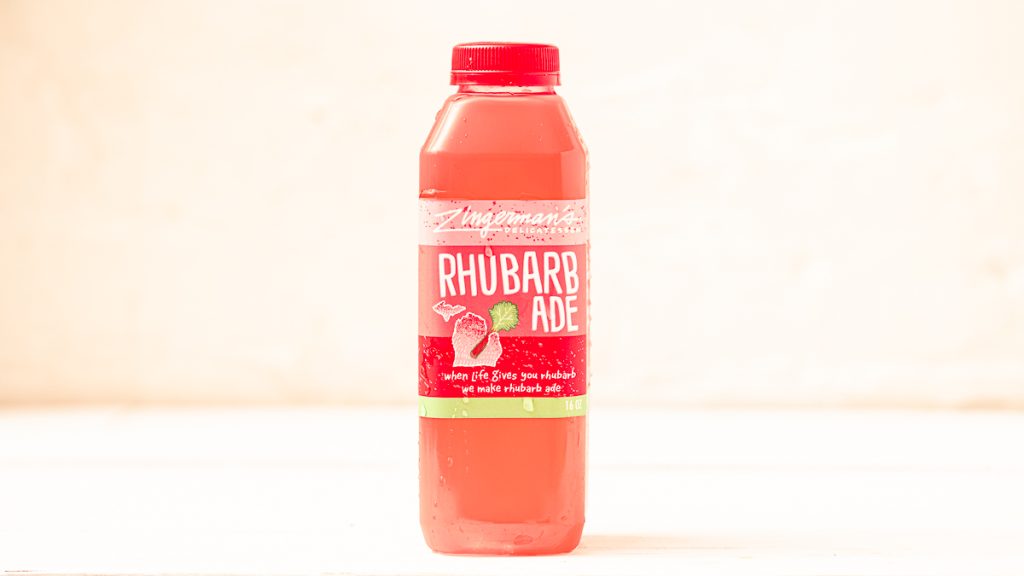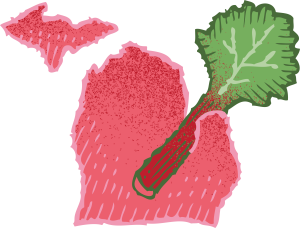
When the temperatures start to rise, we love a sip of something thirst-quenching. And while we wouldn’t turn down a good glass of lemonade, we’re especially partial to a refreshing beverage made with local, seasonal produce. Lemon trees can’t survive Michigan winters unless you’re bringing them inside, which is hard to do on a large scale. Rhubarb, on the other hand, thrives in our climate, and, like lemons, is delightfully tart and tangy—plus a beautiful color to boot.
Having grown up with rhubarb—and perhaps one too many glasses of sugar water passed off as lemonade—head chef and managing partner Rodger Bowser had the idea of turning it into Rhubarb-ade. It’s been a springtime hit ever since, resulting in our own twist on the classic saying: When life gives us rhubarb, we make Rhubarb-ade.
Note that we do not recommend attempting this recipe with a home juicer! (As Rodger says, “That s&^* is like juicing fiberglass.”) Stick with a food processor or a Vitamix. We’re speaking from experience, having burned out many juicers in the Deli kitchen until we upgraded to an industrial-strength juicer.
The moisture content of rhubarb can vary quite a bit, which will impact how hard it is to juice and how much juice you get. Don’t worry if you end up with more or less juice than is called for in the recipe. Just stick with the ratio of 5 parts rhubarb juice to 16 parts water (or a 1:3 ratio to make it easier on your brain) and add sugar to taste.
Rhubarb-ade

Makes about 2 ½ pints
1 lb (about 3½ cups) fresh rhubarb, chopped into 1-inch pieces
3 oz (⅓ cup + 2 tsp) granulated sugar
32 oz (4 cups) water
- Process the chopped rhubarb until it’s completely broken down and looks juicy and pulpy, scraping down the sides of the food processor or blender as needed.
- Using a cheesecloth-lined sieve or a nut milk bag, strain the rhubarb pulp over a bowl, aggressively pressing down and squeezing the pulp to extract as much juice as possible.
- In a large pitcher or container, mix together 1¼ cups rhubarb juice with the sugar and water. Alternatively, place them back into your food processor or blender and pulse to combine to help the sugar dissolve faster
Tip: If rhubarb isn’t in season, or is just hard to find in your neck of the woods, you can substitute an equal amount of frozen rhubarb; let it thaw before proceeding with the recipe. The color of the resulting juice might not be quite as vibrant and it will be a touch less tart, but it will still be a satisfying taste of spring.



